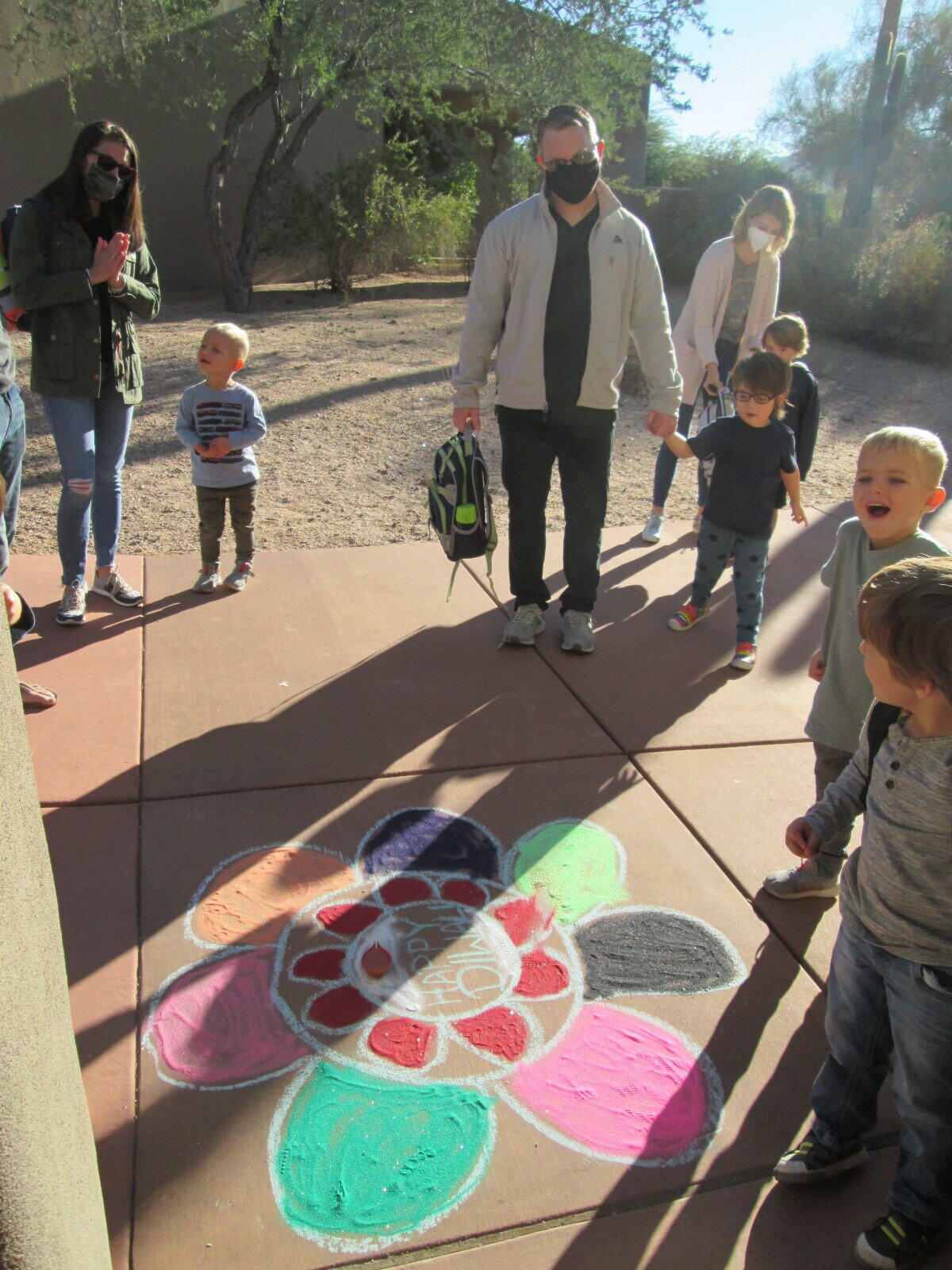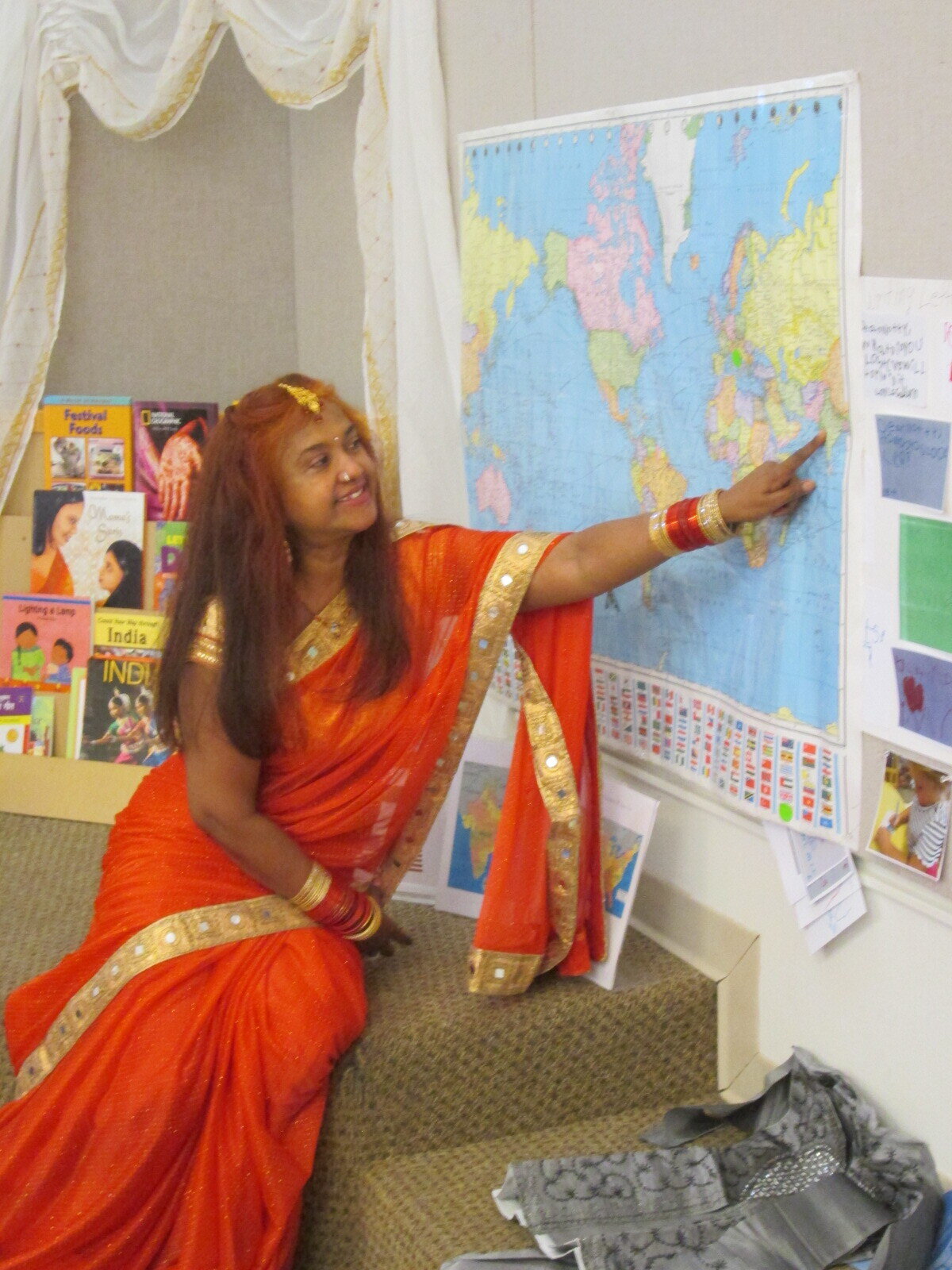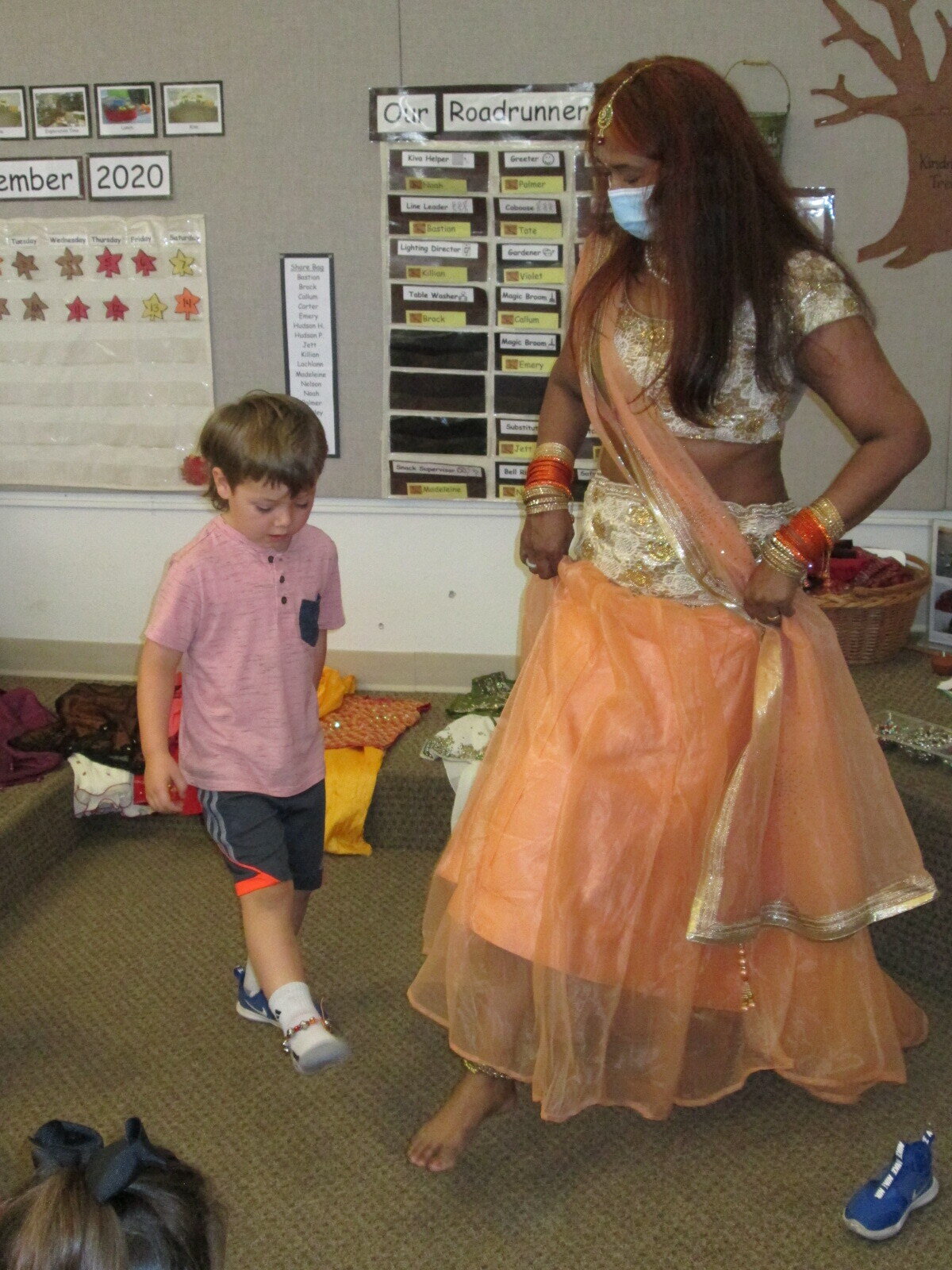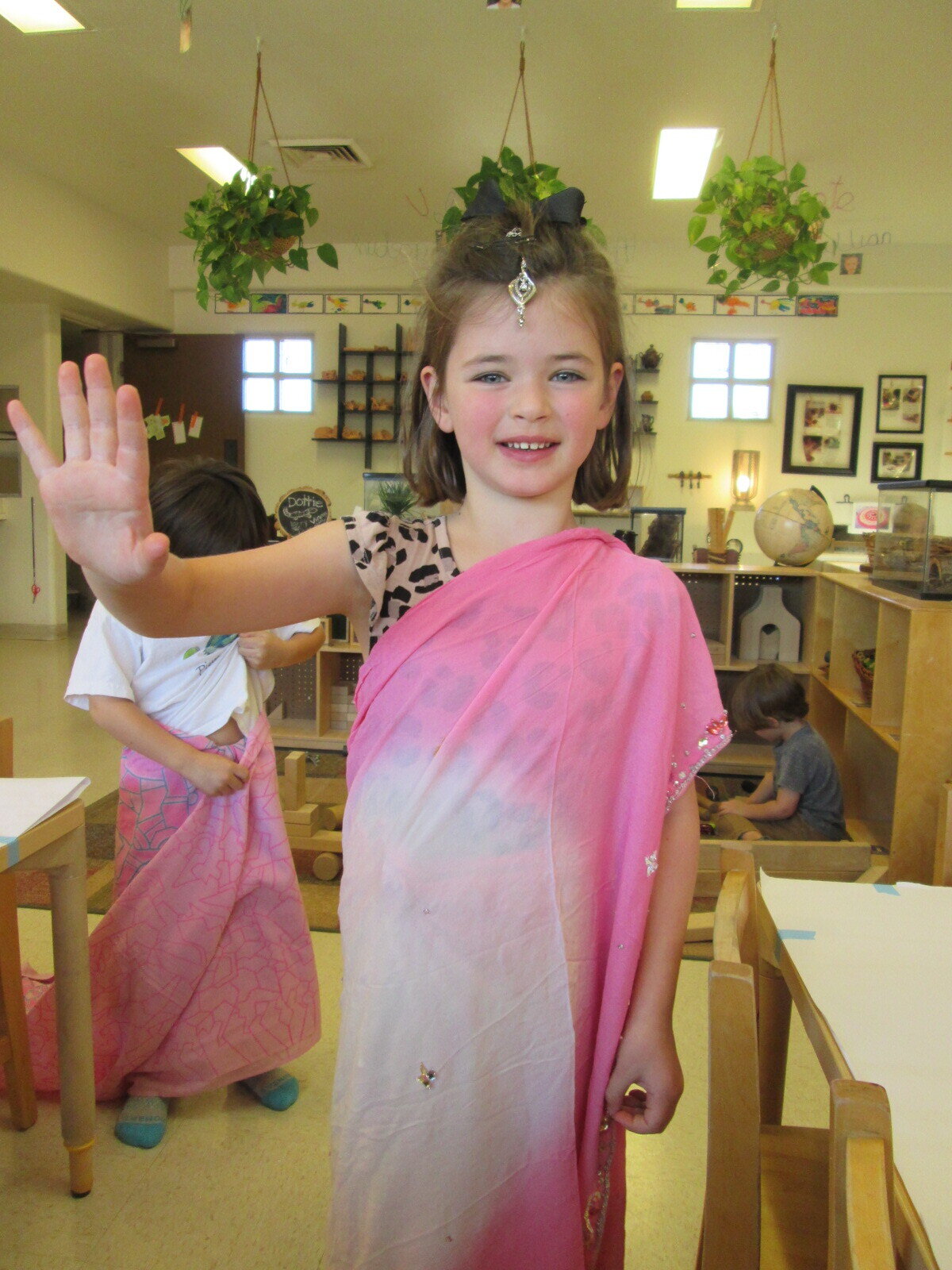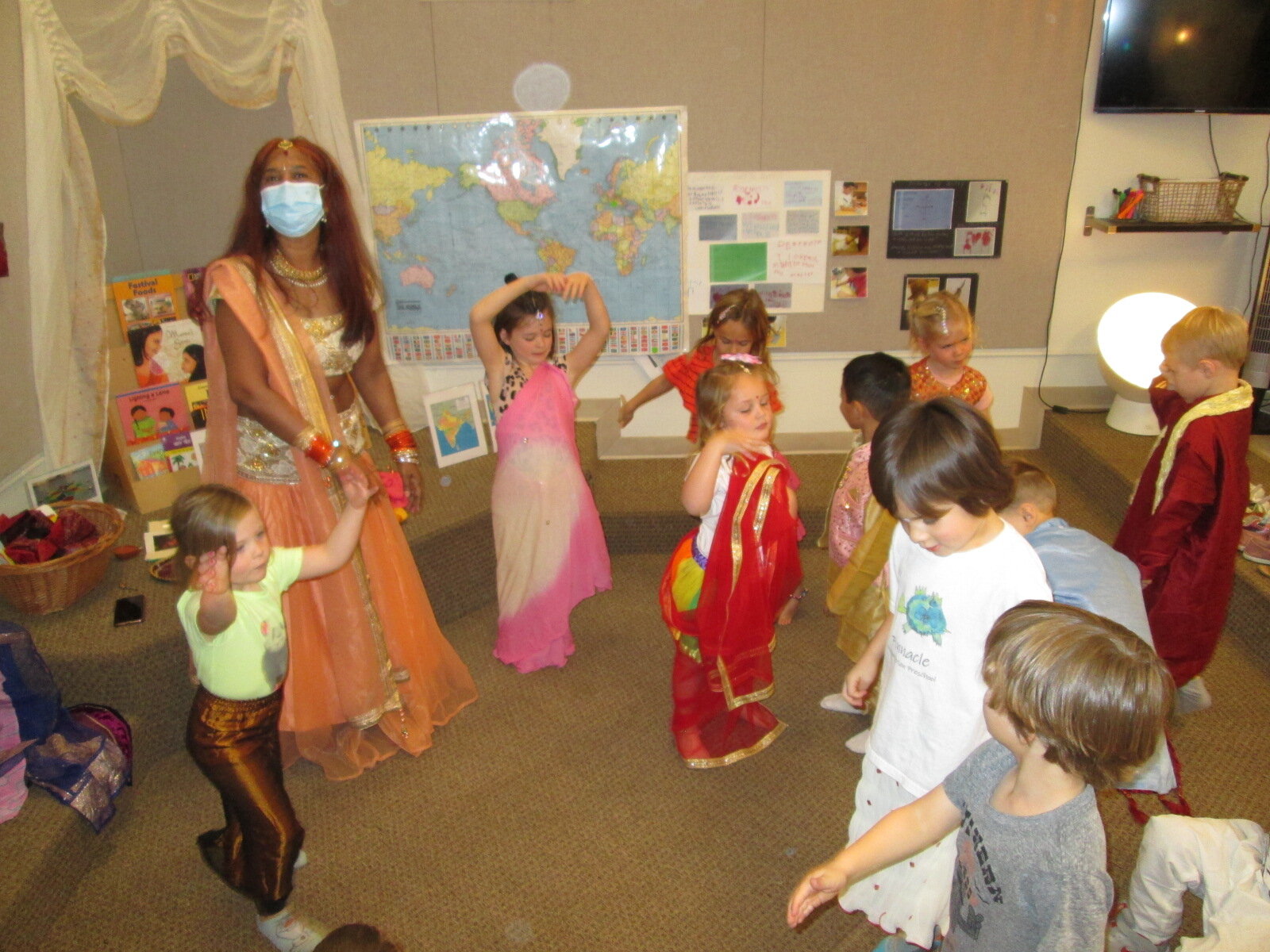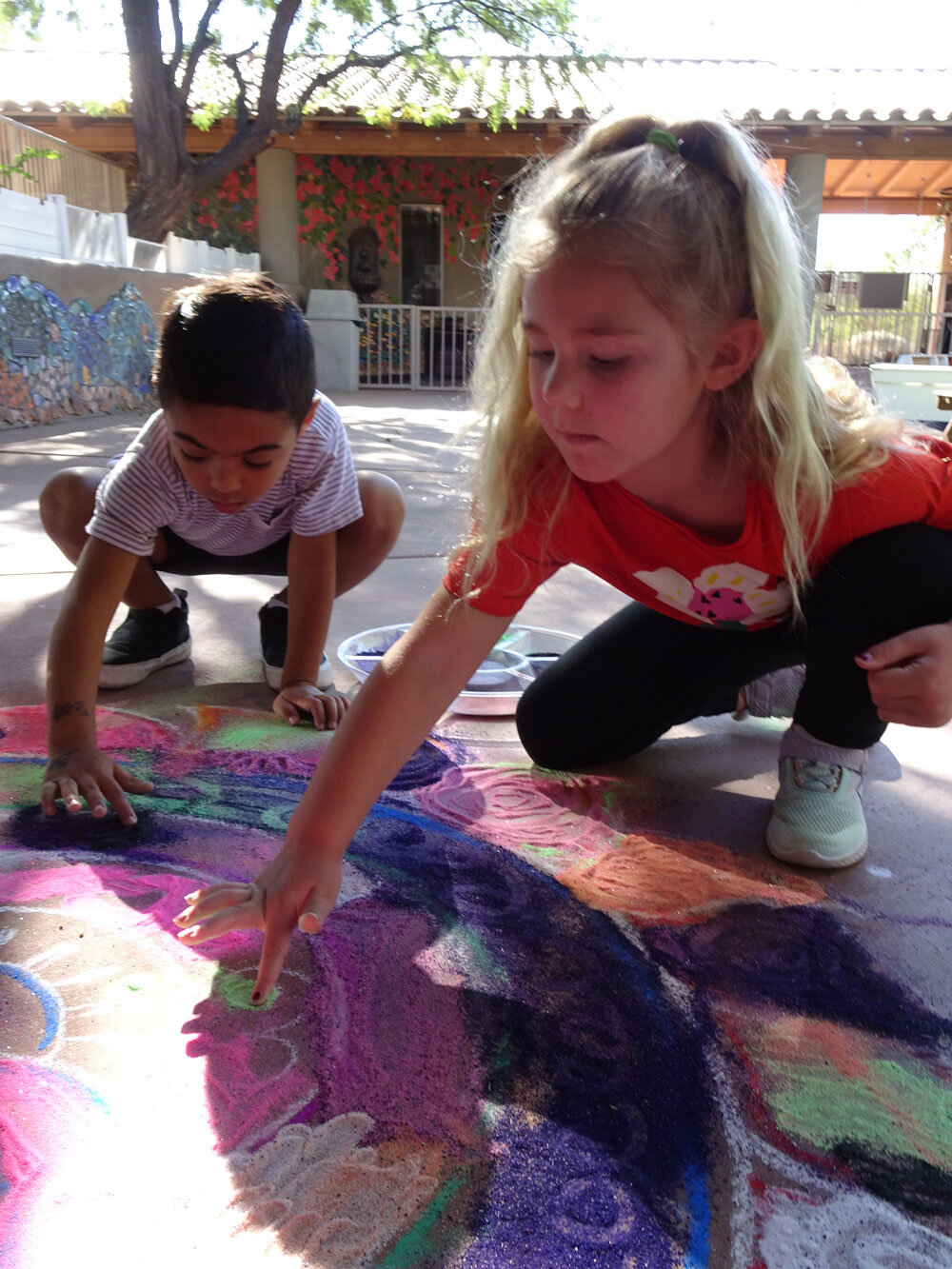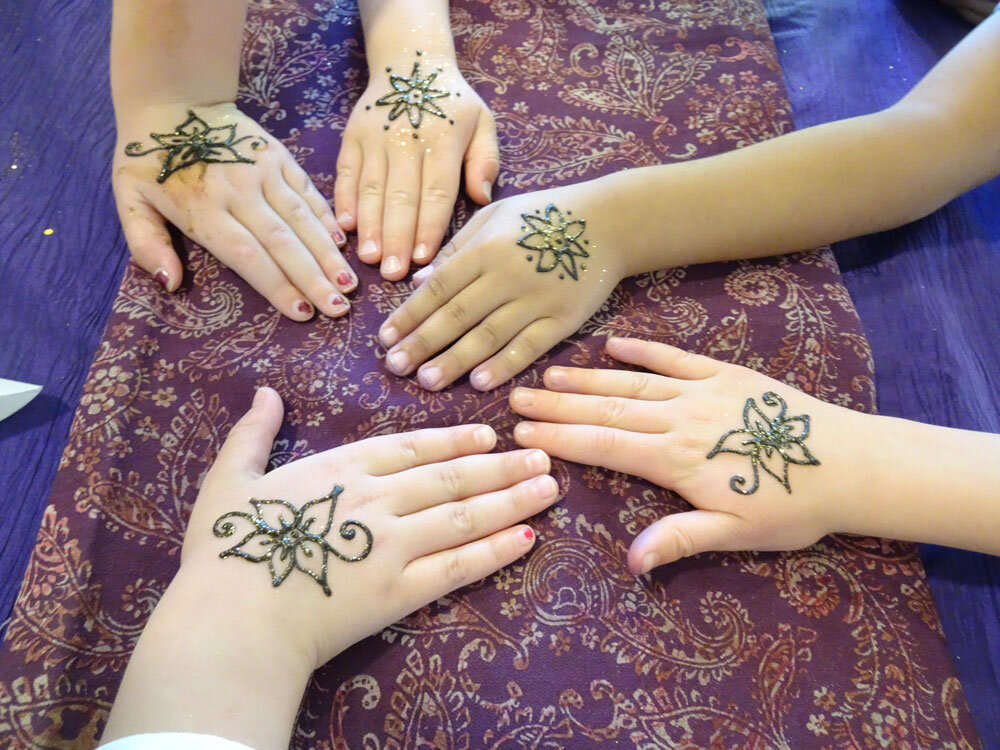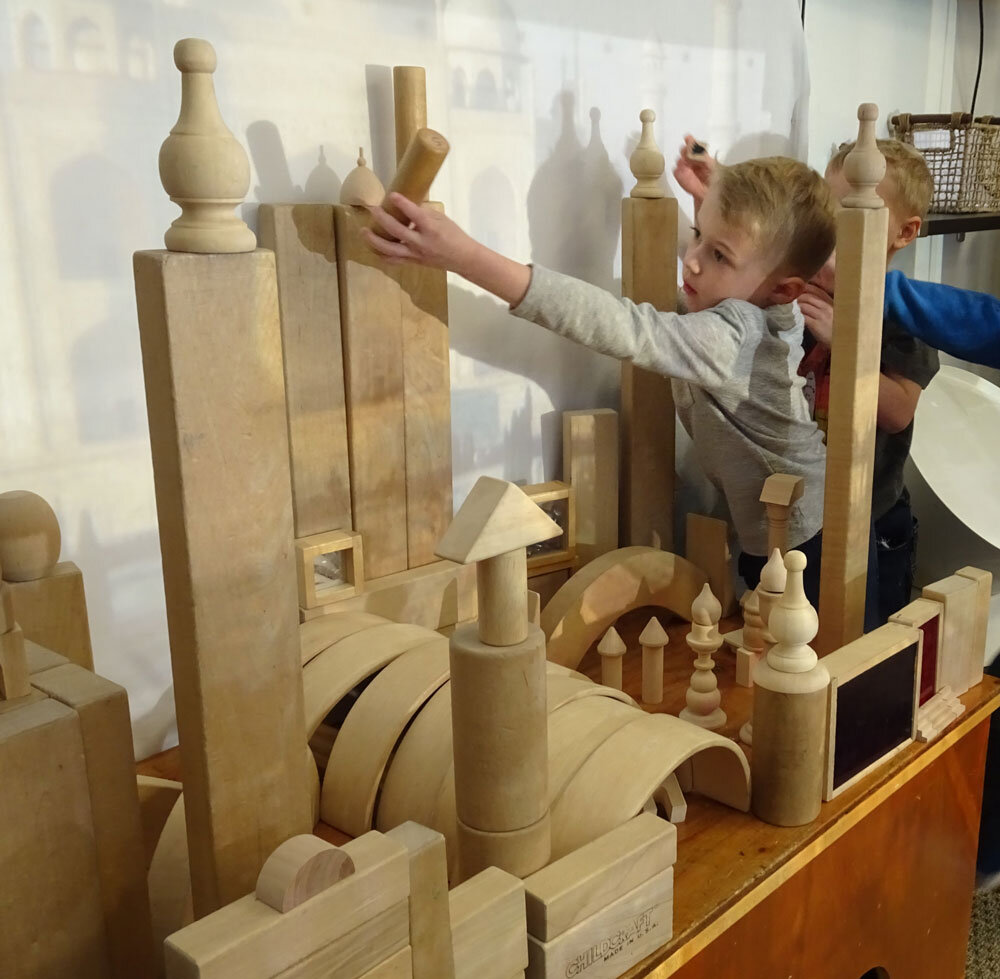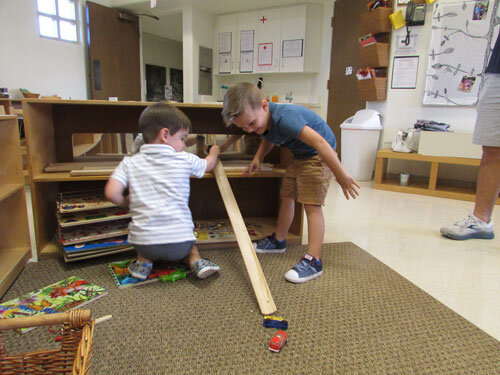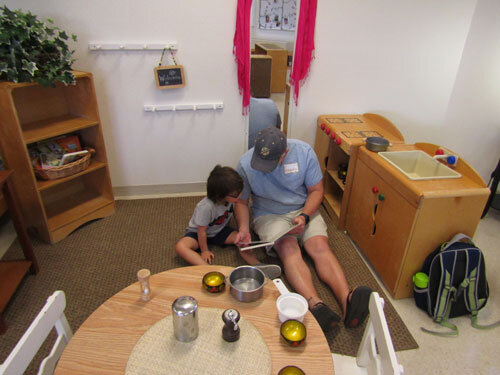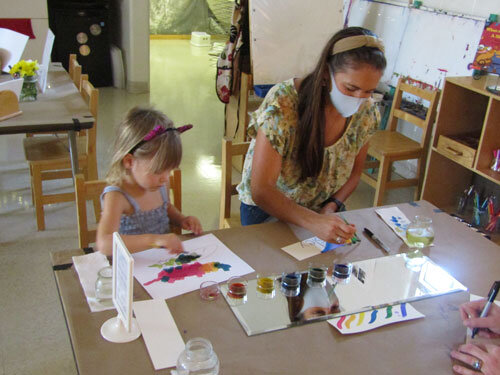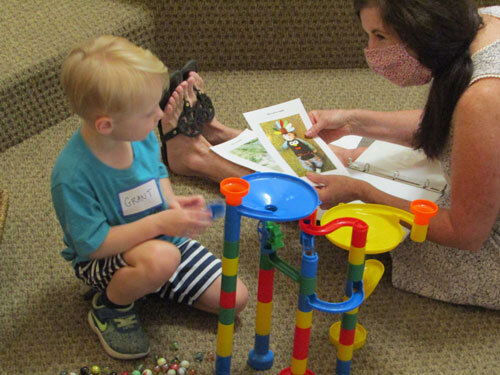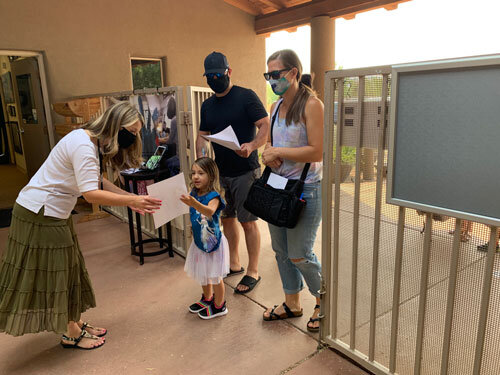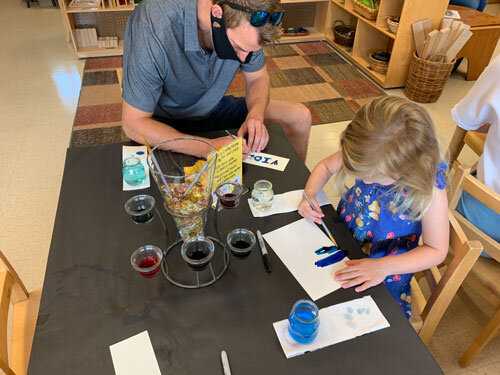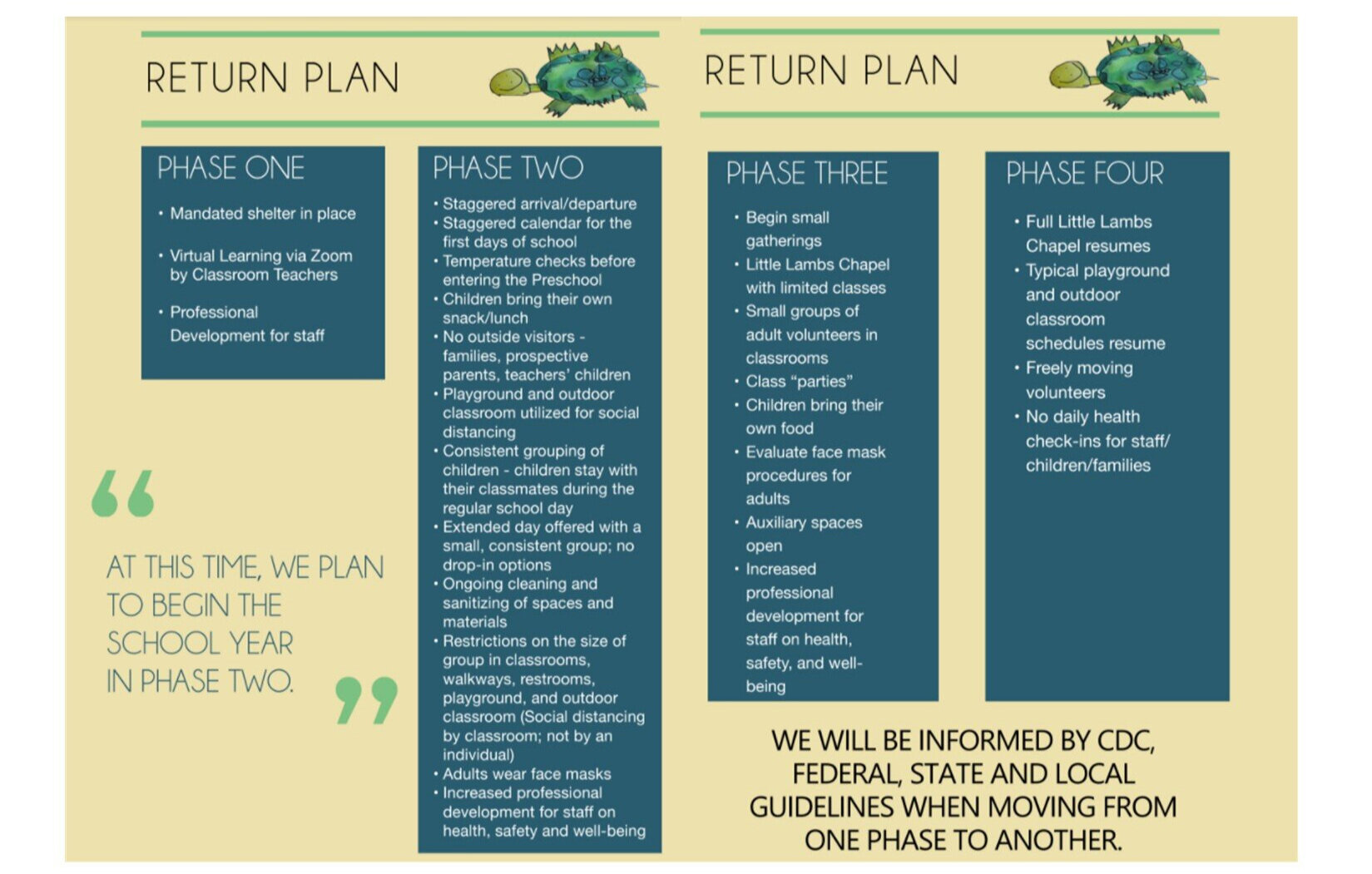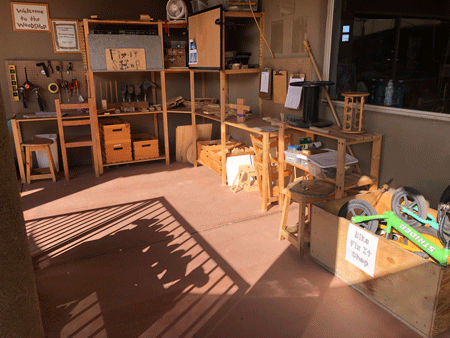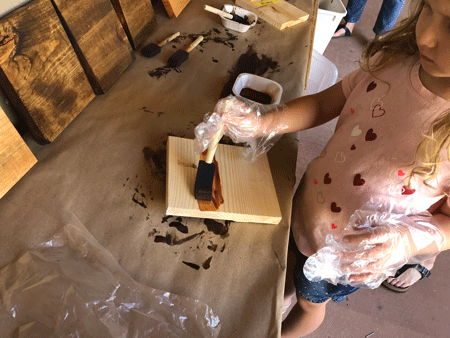Last month, the Roadrunner class celebrated Diwali, an important Festival of Lights in India which celebrates the victory of good and the essence of light. We are grateful to Ms. Juliet for sharing her beautiful culture with us and offering an opportunity for us to widen our perspective as global citizens.
Upon arrival, the children were welcomed by a traditional rangoli in the entryway symbolizing health, wealth, and happiness. Rangoli is an art that precedes sculpting and painting and is considered an essential component of any celebration. They are symmetrical in pattern and believed to emit waves that help us cool our mind and make us feel better, enhancing our balance and harmony (yes, please!).
In the classroom, Ms. Juliet placed a bindi on each child’s forehead for wisdom. She pointed India out on a world map, inviting the children to come aboard an imaginary airplane and fly the two-day trip across the globe to India. “When we arrive, it will be nighttime,” Ms. Juliet informed them, “when it is daytime in America, it’s nighttime in India.”
The children had many ideas about why the times would be different:
“Because it’s a different time and they’re sleeping”
“There’s a clock”
“Because the different times”
“There’s no sun; there’s only one and it moves”
Throughout the week of celebration, the children experienced different elements of the celebration but from the start the beautiful and colorful outfits instantly captivated the children’s attention with intrigue! There were so many new words to explore, from ghara for skirt, choli for blouse, and kurta for shirt to tikka for headpiece and chudia for bracelet.
Payal, known as an anklet in Hindi, is a metallic string with small tinkling bells to create a jingling sound while walking, alerting others to be respectful in the presence of a lady. Married women wear them as receipts of respect and unmarried girls wear them to signify bravery and pride.
Hudson, “How do we do this?”
Palmer, “We’re doing eight bells… we tried ten but it was too long. You have to slide that through very gently, then you pull it slowly.”
Ms. Juliet, “We are making payal so we can dance together”
Hudson, “It’s going to be great songs!”
Nelson, “This is fun!”
Jett, “I love the bindis and the Indian dance”
In the Atelier, the children explored Mehndi with Ms. Melanie:
Presley, “It smells like lavender”
Carter, “It’s cold”
Jett, “Wow! You’re good at that! How did you learn how to do that?”
Ms. Melanie, “I just liked it and I practiced and now I do it every year during Diwali”
Lochlann, “I want a swirl with dots inside the leaves and then some fairy dust (glitter)”
Jett, “I love mine!”
Vivi, “Me too!”
Diwali is an all-encompassing celebration for your senses. From the beautiful sights of the outfits and the touch of the colorful sand to the sounds of the lively music and the smells and tastes from the delicious foods.
Ms. Juliet, “It’s time to cook! Listen, now they are dancing” (adding the spices to the oil)
Callum, “I can hear it! I can hear it louder” (after the onions were added)
Palmer, “Because they’re bigger”
Jett, “That looks awesome!”
Carter, “It smells good”
Emery, “They’re louder because there’s more stuff in it”
Lucy, “They’re talking while they’re dancing”
Palmer, “They’re saying Hi to their new friends”
Lucy, “They’re talking in Bubbling language!”
Viv, “It’s delicious!”
Carter, “I loved, loved, loved it!”
Lochlann, “I wish I could eat it the whole time, because I love it… Namaste, Ms. Juliet”
From their celebration of Diwali, a strong interest in the Taj Mahal has emerged from the Roadrunner class. Many children have begun representing their ideas through elements of block building, drawings, and light/shadow.
We wish you all a very happy holiday season! This year, more than ever, we are immeasurably grateful for your support. Thank you for allowing us the privilege of serving your family!
Love, Pinnacle Presbyterian Preschool Staff

















































